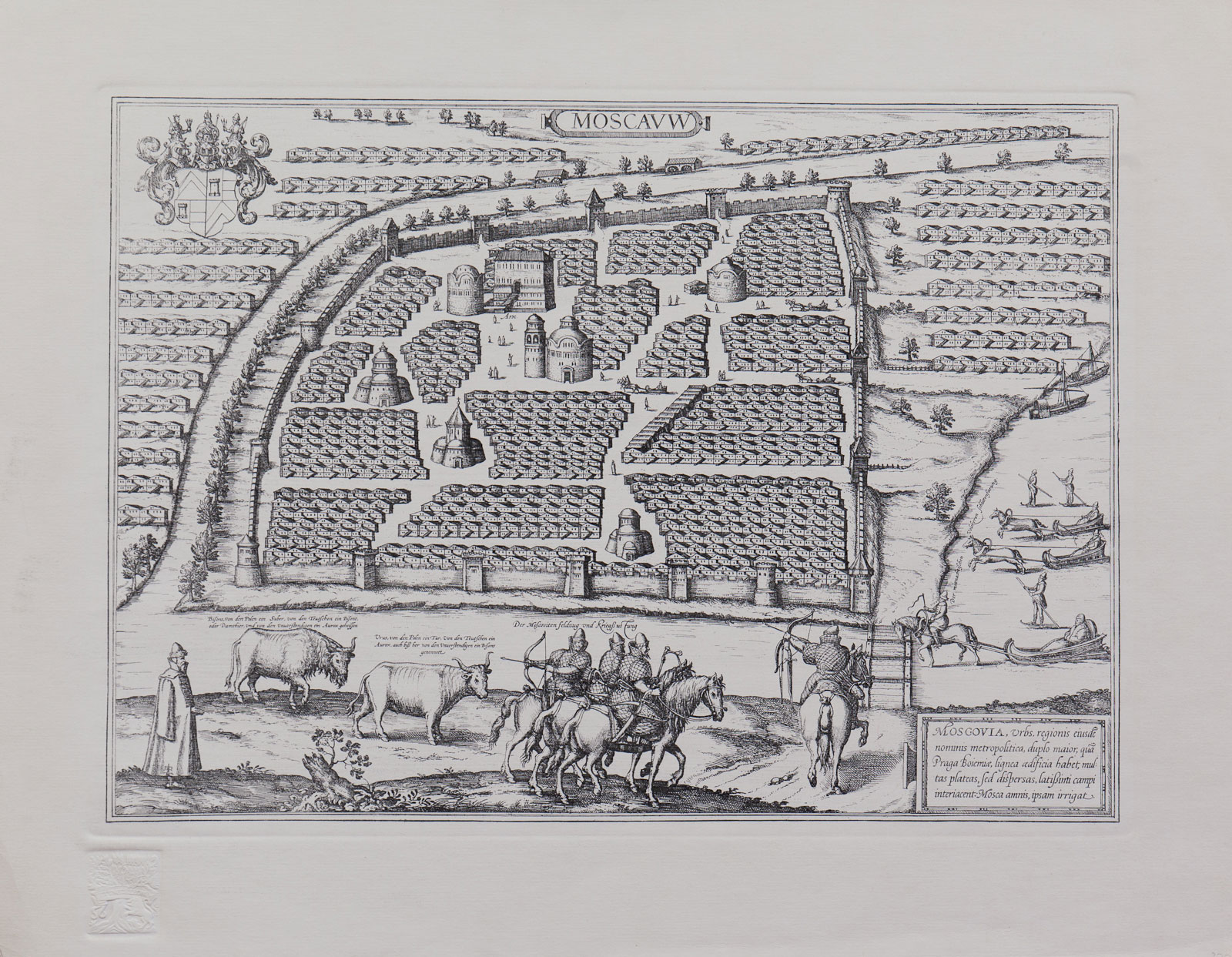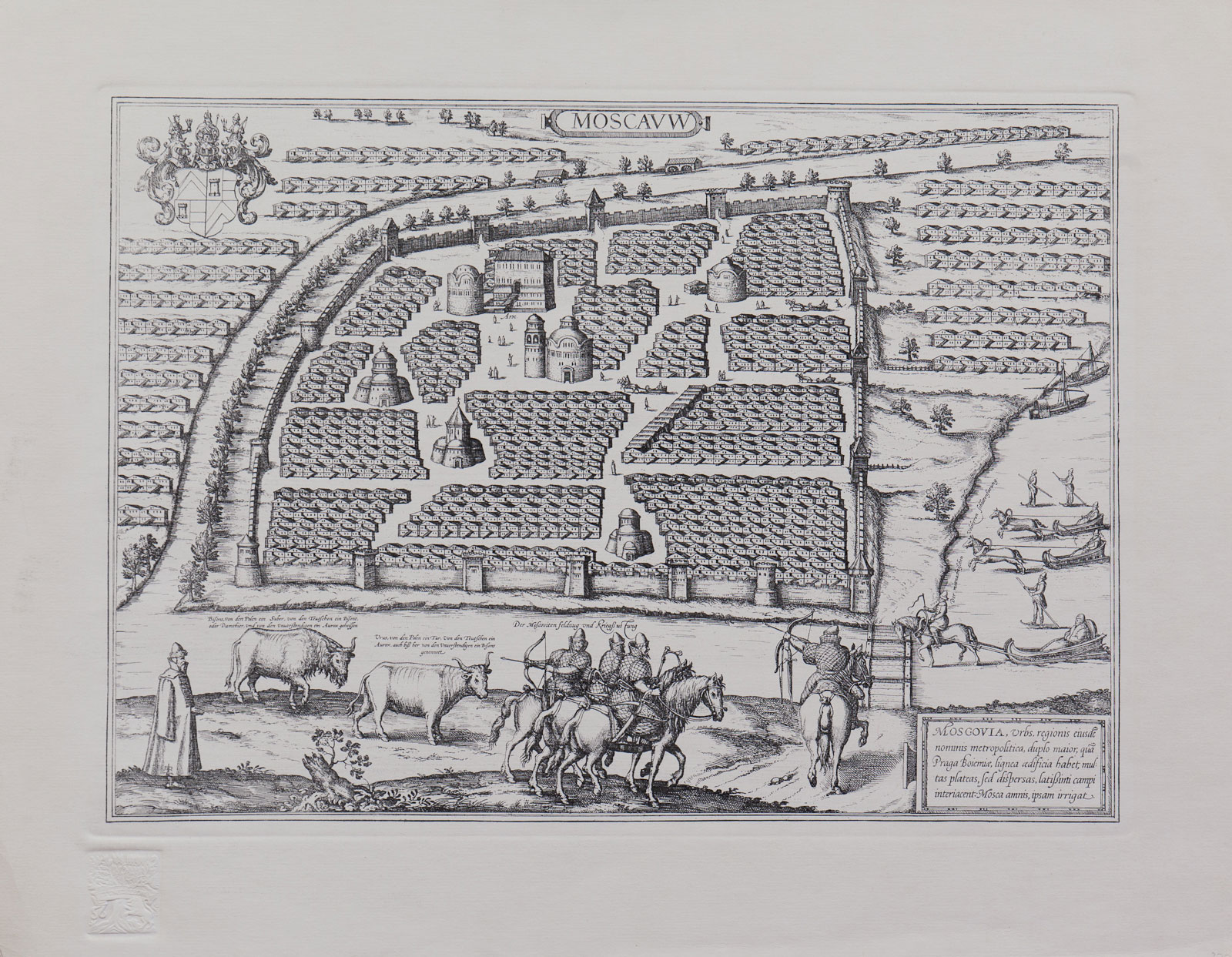
Framing at additional cost.

|
The engraved plan of Moscow by Sigismund Herberstein is known as the first foreign printed plan of Moscow. The plan was compiled from Herberstein's memory for his notes on Russia, first published in Basel in 1556. Since Herberstein drew his plan of Moscow from memory, the image of the city within the Kremlin turned out to be rather arbitrary. Nevertheless, the plan shows the main Kremlin stone buildings: the Annunciation, Assumption and Arkhangelsk cathedrals, the royal chambers, Ivan the Great and the Chudov Monastery.
The Moscow River and the Neglinnaya River are indicated on the plan, as well as the inhabitants of the city - residential people, driving on a frozen river in horse harnesses ("midnight riders"), a shepherd with his cows and bulls ("bison") and armed horse warriors in full gear designated as "Muscovites in military service."
If researchers do not doubt the reliability of the facts set forth in Herberstein’s essay on "Muscovite affairs", the Moscow plan is rightly considered rather arbitrary. It has been speculated that, to illustrate his book, published 30 years after his last trip to Muscovy, Herberstein used the sketches of the Kremlin made before his reconstruction in the late 15th and early 16th centuries. In this case, Herberstein’s plan is a unique image of the center of Moscow as it developed in the era of Ivan Kalita and Dmitry Donskoy. (Klepikov, S. Bibliography of printed plans in Moscow. No. 5)
|
 * to history lovers / Moscow history
* to history lovers / Moscow history * to history lovers / Moscow history
* to history lovers / Moscow history